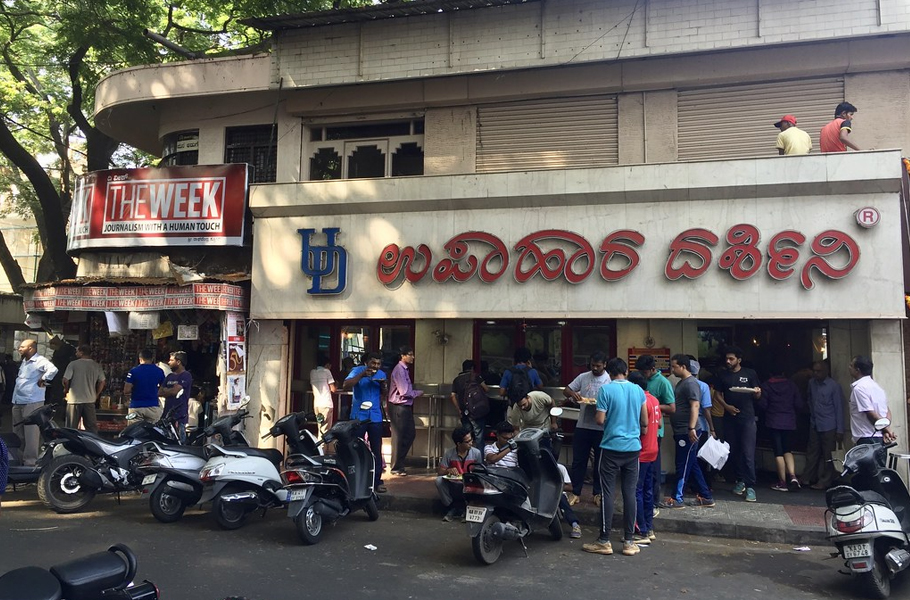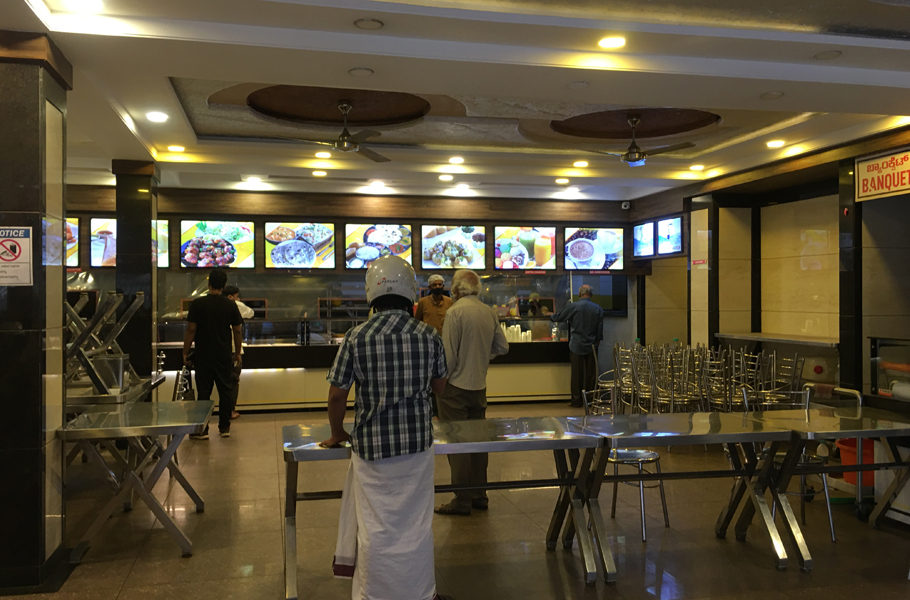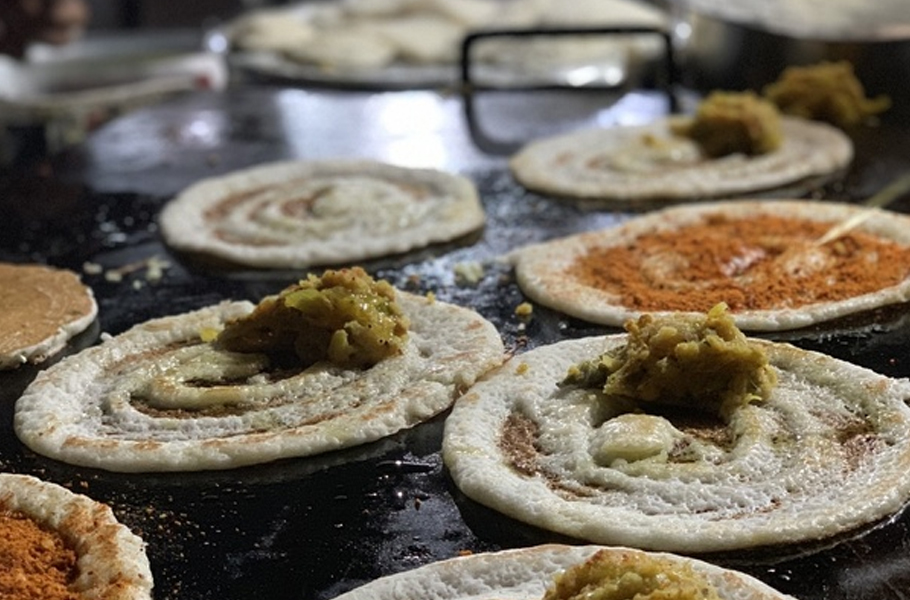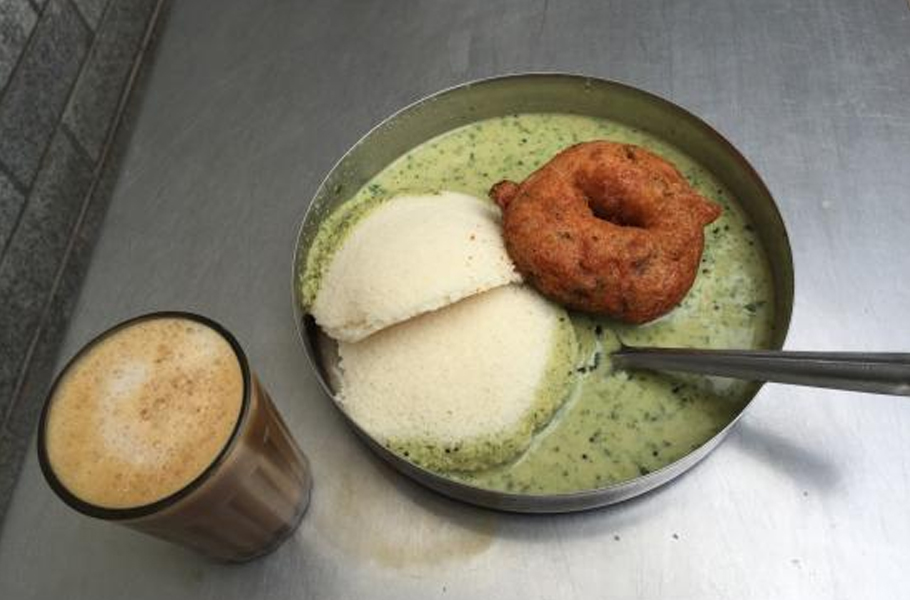
- Home
- News
- Analysis
- States
- Perspective
- Videos
- Education
- Entertainment
- Elections
- World Cup 2023
- Features
- Health
- Budget 2024-25
- Business
- Series
- NEET TANGLE
- Economy Series
- Earth Day
- Kashmir’s Frozen Turbulence
- India@75
- The legend of Ramjanmabhoomi
- Liberalisation@30
- How to tame a dragon
- Celebrating biodiversity
- Farm Matters
- 50 days of solitude
- Bringing Migrants Home
- Budget 2020
- Jharkhand Votes
- The Federal Investigates
- The Federal Impact
- Vanishing Sand
- Gandhi @ 150
- Andhra Today
- Field report
- Operation Gulmarg
- Pandemic @1 Mn in India
- The Federal Year-End
- The Zero Year
- Premium
- Science
- Brand studio
- Home
- NewsNews
- Analysis
- StatesStates
- PerspectivePerspective
- VideosVideos
- Entertainment
- ElectionsElections
- Sports
- Loading...
Sports - Features
- Budget 2024-25
- BusinessBusiness
- Premium
- Loading...
Premium

How Covid-19 is crushing Darshini hotels in Bengaluru
The quintessential Darshini fast food eatery, found in every nook and corner of Bengaluru, is fast losing the plot amid the Covid-19 pandemic as business fails.

Soft and fluffy idlis dipped in sambar, butter dosa drenched in coconut chutney, bisi bele bath (a mix of lentils, rice and vegetables), served hot in a steel plate, accompanied by a one-by-two coffee in a self-serve small south Indian restaurant, Café Darshini in Jayanagar, caught the attention of many Bengalureans when it was started back in 1983. Served hot and steaming from the oven,...
Soft and fluffy idlis dipped in sambar, butter dosa drenched in coconut chutney, bisi bele bath (a mix of lentils, rice and vegetables), served hot in a steel plate, accompanied by a one-by-two coffee in a self-serve small south Indian restaurant, Café Darshini in Jayanagar, caught the attention of many Bengalureans when it was started back in 1983.
Served hot and steaming from the oven, and at a price affordable for the middle class, Darshini was a concept that many big businessmen dismissed as a fast route to failure.
But R Prabhakar, the man behind the restaurant was sure that this would work. His business model was affordable prices, high-volume of customers and low-profit margins, lesser or no wait time.
Most of the dishes were served quickly and it operated without any advertising. The marketing was largely driven by word of mouth in and around the locality.
Soon, contrary to naysayers’ predictions, Darshini set off a chain reaction and several such restaurants popped up across the city. It even spread to Hyderabad and Chennai and other cities.
In Bengaluru city, India’s Silicon Valley, the influx of tech companies in the past two decades accelerated the growth of these budget restaurants. People from other industries jumped to become entrepreneurs in this segment and were happy to have a small customer base of 200-400 people a day and run the operations.
The simple and inexpensive menu, with a token system of placing orders, with no waiters, and food prepared quickly and served in steel plates, spoons and forks dipped in hot water, from which customers would pick and stand around the three or four tables inside and outside and eat, (often no chairs for patrons)—typically attracted the middle and lower class population rushing to work, with little time for food. One could find one or more Darshinis in almost every commercial area.
Covid shutdown
That was till the Covid-19 pandemic hit. Around 10,000 such hotels were shut during the first wave and lockdown, and opened again, only to be shut again during the second wave.
With stiff competition from the numerous eateries that serve a diverse range of culinary tastes, and which are trending online through delivery platforms like Zomato, Swiggy or others, Darshinis are facing a never-before-seen crisis—to shut down.

There are fewer people coming out now. The costs of fuel (including cooking gas), vegetables and raw materials, electricity and other charges have risen, but these restaurants haven’t raised their prices, as they fear losing customers, especially those in the working classes.
Parameshwar Adiga, a bank employee turned hotelier from Dakshina Kannada region in Karnataka, ran a Darshini named Ingu Thengu Hotel in south Bangalore for six years. Adiga hails from a family of entrepreneurs in the hotel industry. He ran the hotel for nearly six years with 18-20 workers. The Darshini, located close to a tech hub, had IT employees in the vicinity as its primary customers. But with several companies asking employees to work from home and many moving out of the city and offices remaining shut, Adiga’s business has taken a hit.
“It’s a highly competitive market. The profit margins would not be more than 10-15%, if one takes into account the salaries of workers, food wastages, building rentals, licensing fees, and unforeseen repairs and upkeeps,” he says.
Ups and downs
Soon after the first lockdown last year, Adiga followed a wait-and-watch approach for two months. But soon after realised he would run into losses. Although he managed to stay afloat initially for two months, he later decided to completely shut down. Adiga, who was mostly dependent on walk-in customers, also realised that serving online customers would not fetch him enough returns.
For him, the average daily customers would be 200 people on a weekday, and double that on a weekend, with a ticket size of ₹100-150 for each customer.
“I would break even only if I make ₹7-8 lakh a month in turnover. But with the pandemic, I was not even making half the business. So I decided to shut it down,” he says. “I ran it because I was passionate about it. At 65, I cannot think of an alternative business.”
Adiga says he can afford to shut down without losing much as his other family members are earning. But he says not many are like that as they were solely dependent on this business for livelihood.
He has little hope for the future, saying it would take at least six months to 1 year for things to come to the pre-COVID levels. “Not many players can sustain till then.”
Madhusudan Mokashi, a marketing professional turned hotelier, says with low entry barriers and quick cash flows, anybody could get into this business and make money if they had a set of 100-300 customers a day, depending on where one chooses to set up operations. In the pre-COVID scenario, he says it was easy to find about 7-8 Darshinis in a 500-metre range of a commercial area in any locality.
Mokashi ran Mysuru Coffee Thindi, focussed on Mysore style (more aromatic and less spicy) restaurant in Jayanagar. With COVID devastating the business, he shut it initially for two months last year, started it again once the lockdown was relaxed and says the business indeed picked up. But with the second lockdown, things turned worse.
“The commercial gas cylinder prices went up from ₹900 to ₹1,300-1,400. The fixed cost remained the same. In order to sustain ourselves, we ended up digging deep into our savings and started to borrow money,” Mokashi said.

Prices of grocery items including cooking oil increased by 30-40%. And yet most restaurants did not increase the tariff. “The moment you increase prices, you stop building volumes and start to bleed. People didn’t have time to react. People were focussed on restarting business,” he says.
“Even though I was willing to sell, there were no buyers. We had 22 employees and had cut it down to 8. In two months, we realised we were bleeding, so we shut temporarily.”
Though he managed to stay afloat till May this year and shut down briefly, he hopes that there’s a revival.
“In the second wave, people were more scared. We thought there’s no point in continuing the business.” But in the interim period, he had started to serve dabba (tiffin box) service to cater to senior citizens and was reaping benefits out of it.
Mokashi, who was heading the strategy and marketing division at Aditya Birla Group turned to run a Darshini with an aim to become an entrepreneur and create jobs.
“I borrowed ₹40 lakh. That (debt) piled up when no income was coming in. Even after the reopening, against my everyday expenses of ₹40,000. I was making less than ₹20,000,” he says.
In another area, Vinodh Sarangapani, another entrepreneur running a Darshini hotel, who made a business of ₹3,000-4,000 a day before COVID, shut his venture last June following the lockdown imposed in the first wave of the COVID-19 pandemic.
Sarangapani used to run a hotel on Sarjapur Road, serving 20 people at a time. As a small businessman, Sarangapani’s business was dependent on the floating population in the city who spent ₹50-100 a meal. He too felt he could not sustain on the online orders, which anyway were not his target customers. So he shut it and started selling breakfast near his home in June this year.
“With house rent to pay, and two school-going kids, I needed to earn something,” he says. He rented a room and cooked breakfast in the pathway leading to the house. Despite the civic body relaxing lockdown rules since June 14, he says nothing much changed as he feels people are still afraid of coming out to buy food.
Many of his customers are in the low-income category whose purchase remains ₹30-50 with each order. “I never thought I would end up like this. But what other choice do we have?” he asks.
Ray of hope?
PC Rao, president of Bruhat Bengaluru Hotels Association, says nearly a third of the approximately 10,000 Darshini hotels in the city have shut during the pandemic. “Take-away is not feasible. Only 20% orders for many hotels. And a few are still not linked to Swiggy or Zomato,” he says.

Rao says the owners’ collective made repeated requests to the government to waive property tax and electricity charges and offer some benefit to our workers so that it could reduce their burden. But he says the government never considered us as an industry and failed to announce any relief measures.
That the business model is still a thriving one can be ascertained from the fact that Vasudev Adiga’s ‘Adiga’s’ chain of restaurants, was sold to New York’s New Silk Route Venture Capital in 2017.
Over the years, Prabhakar, the founder of the first Darshini, turned from entrepreneur to food connoisseur to consultant for those who wish to set up the Darshini business in the country. He says now with COVID affecting the darshini business badly it’s a game (business) of survival of the fittest.
Mokashi says in Bengaluru, online customers look for star ratings, be particular about hygiene standards and opt if only it comes through peer recommendations. “They won’t try even if we give discounts. So popularity matters,” he says.
During pre-CoVID times his online to offline order ratio was 70-30. His average ticket size would be about ₹200 with about 150 online orders a day and 60% more during weekends.

